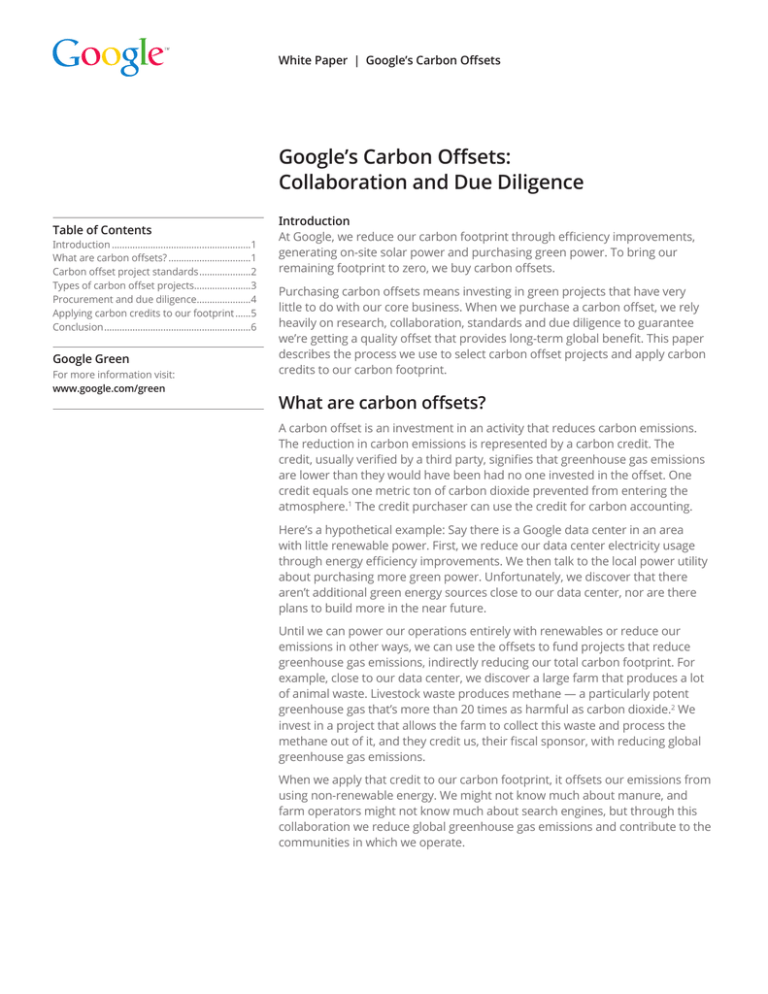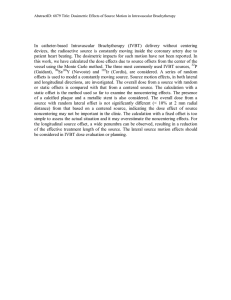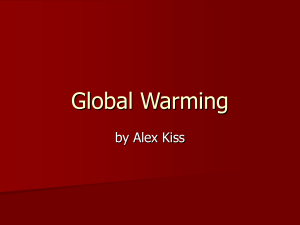
White Paper | Google’s Carbon Offsets
Google’s Carbon Offsets:
Collaboration and Due Diligence
Table of Contents
Introduction.......................................................1
What are carbon offsets?.................................1
Carbon offset project standards.....................2
Types of carbon offset projects.......................3
Procurement and due diligence......................4
Applying carbon credits to our footprint.......5
Conclusion..........................................................6
Google Green
For more information visit:
www.google.com/green
Introduction
At Google, we reduce our carbon footprint through efficiency improvements,
generating on-site solar power and purchasing green power. To bring our
remaining footprint to zero, we buy carbon offsets.
Purchasing carbon offsets means investing in green projects that have very
little to do with our core business. When we purchase a carbon offset, we rely
heavily on research, collaboration, standards and due diligence to guarantee
we’re getting a quality offset that provides long-term global benefit. This paper
describes the process we use to select carbon offset projects and apply carbon
credits to our carbon footprint.
What are carbon offsets?
A carbon offset is an investment in an activity that reduces carbon emissions.
The reduction in carbon emissions is represented by a carbon credit. The
credit, usually verified by a third party, signifies that greenhouse gas emissions
are lower than they would have been had no one invested in the offset. One
credit equals one metric ton of carbon dioxide prevented from entering the
atmosphere.1 The credit purchaser can use the credit for carbon accounting.
Here’s a hypothetical example: Say there is a Google data center in an area
with little renewable power. First, we reduce our data center electricity usage
through energy efficiency improvements. We then talk to the local power utility
about purchasing more green power. Unfortunately, we discover that there
aren’t additional green energy sources close to our data center, nor are there
plans to build more in the near future.
Until we can power our operations entirely with renewables or reduce our
emissions in other ways, we can use the offsets to fund projects that reduce
greenhouse gas emissions, indirectly reducing our total carbon footprint. For
example, close to our data center, we discover a large farm that produces a lot
of animal waste. Livestock waste produces methane — a particularly potent
greenhouse gas that’s more than 20 times as harmful as carbon dioxide.2 We
invest in a project that allows the farm to collect this waste and process the
methane out of it, and they credit us, their fiscal sponsor, with reducing global
greenhouse gas emissions.
When we apply that credit to our carbon footprint, it offsets our emissions from
using non-renewable energy. We might not know much about manure, and
farm operators might not know much about search engines, but through this
collaboration we reduce global greenhouse gas emissions and contribute to the
communities in which we operate.
Carbon offset project standards
Carbon offset producers have an incentive to pitch planned business improvements as carbon
reduction projects to attract outside investment dollars and conserve their own capital. For example,
if the farm in the previous example already had plans to build a methane capture system because it
made financial sense or was required by law, giving them additional money through carbon offsets
would not create any additional benefits for the environment. Since our goal is to offset our carbon
emissions, we only support projects that would not come into being without our investment.
When Google first purchased carbon offsets in 2007, we were aware of the difficulties in buying
an effective offset. To counter the information asymmetry between Google and carbon offset
producers, we do rigorous research to make sure we are buying only quality offsets, based on four
standards: additionality, leakage prevention, permanence and verifiability.
Additionality
As previously discussed, Google’s first priority when examining a carbon offset project is proving that
it provides additionality—meaning that the proposed project reduces greenhouse gas emissions that
would not be reduced through other incentives. We work to guarantee additionality by examining
past financial information on the project, project details, potential carbon reductions and similar
projects in development. We also talk directly to project owners and operators. The goal of these
assessments is to determine if our investment would lead to a carbon reduction that would not
otherwise happen.
Leakage prevention
An additional criteria is leakage. A reduction of greenhouse gas emissions through one project might
simply shift, or leak, to another location or activity. To prevent leakage, we closely examine the
community and environment in which the project is going to take place. Identifying project risks and
key stakeholders are the primary components in determining potential leakage.
Leakage typically occurs in situations where resources are being protected. For example, if a carbon
offset program focuses on protecting a forest from being logged, it’s entirely possible that loggers
might move their operations down the road to another forest. Ensuring that reductions are more
global—and not just local—is critical to preventing leakage.
2
Permanence
Tied into leakage prevention is the standard of permanence. Greenhouse gases prevented from
entering the atmosphere should be stopped permanently. We need to be certain that the projects
we invest in are not temporary methods of carbon reduction or greenhouse gas sequestration.
This is typically a concern with forestry projects or anything where greenhouse gases are being
stored for a period of time. If there is significant risk that the stored carbon would be released
through events such as a forest fire or a leak from sequestered carbon, the project would need to
account for this, such as through insurance or a buffer of additional reductions.
Verifiability
The last requirement is verifiability. An objective third party—someone other than the project
developer and Google—must be able to look at project data and confirm that the carbon reductions
are real and credible. The third-party verifier determines the proper baseline for greenhouse gas
reductions and verifies that the reductions adhere to strict monitoring and reporting standards.
Types of carbon offset projects
A number of different project types qualify for carbon offsets, and more are becoming available
as new technologies for reducing greenhouse gases are developed. The kinds of projects Google
considers for carbon offsets include:
Landfill gas capture
Decomposing waste creates methane gas, which is a potent greenhouse gas. Small and mediumsized landfills in many U.S. states are not required to capture or process methane, and thus the
methane vents freely into the atmosphere. Capturing and destroying this gas reduces the total
emissions of greenhouse gases. Captured methane can be burned to generate electricity or heat; or
after treatment, it can also be injected into the nearby natural gas grid or used locally as compressed
natural gas (CNG) for vehicles and other uses. When other options to use the gas aren’t available—
such as due to the small volume of gas created or the project’s remote location—the gas might
instead be burned in a flare.
It might sound counterintuitive that burning something reduces carbon emissions, but when
methane is burned it converts into carbon dioxide and water. Carbon dioxide is a less potent
greenhouse gas than the original methane, effectively reducing greenhouse gas emissions.
Currently, the bulk of Google’s carbon offsets come from investment in landfill gas projects.
3
Agricultural methane capture
Similar to landfill gas, agricultural methane is produced at farms from decomposing animal waste.
Carbon offset projects are designed to collect this waste and process it into usable products,
including energy and heat. One method involves collecting manure into a huge, circulating tank
called a “digester.” The digester promotes bacterial growth, which breaks down the waste into usable
organic fertilizer and methane. The methane is then captured and used or burned.
Forestry projects
A large amount of carbon is stored in forests. As forests grow, they absorb and sequester additional
carbon. However, as forests are logged, degraded or burned, carbon is released. There are various
kinds of forestry projects offering carbon offsets, but the concept is either to protect forests from
destruction and degradation or to enhance and develop new ones.
Procurement and due diligence
Carbon offset projects are verified by third-party investigators using published public standards.
Once a project is verified as creating a credible reduction in greenhouse gases, a carbon registry
issues a carbon credit for each metric ton of carbon dioxide (or equivalent) reduced.
Google takes a hands-on approach to pursuing offset projects to ensure that we’re getting the
highest quality offsets available. We source projects in a variety of ways, including requesting
proposals from project developers and working directly with project owners, marketers and brokers.
While we rely heavily on third-party standards, if we find projects that we believe meet our criteria
where no standard exists, we may pursue them and develop a new standard.
When we invest in a carbon offset project, we perform due diligence by:
1. Reviewing the documentation from the offset seller and from third-party sources, including
reviewing emissions data, permits and site testing results.
2. Visiting the project site and meeting people in charge of day-to-day operations.
3. Reviewing the verification reports, if a project has already been verified.
Only when we are confident of the operation’s quality and have confirmed that the project meets our
standards do we purchase the carbon credits associated with the project.
For example, in 2010, Google decided to purchase the offsets associated with the Berkeley County
landfill gas project in South Carolina. This project involved collecting methane gas from a landfill
and using the gas to generate electricity. A local electric utility, Santee Cooper, would purchase the
methane from the site to fuel a nearby power plant.
4
With revenue from gas sales, Google had to carefully review the project’s financials in order to verify
additionality.3 We took into account the costs to install the methane capture system versus the
estimated revenue from the sale of landfill gas. We had to answer the following question: If there
wasn’t revenue from the sale of carbon offsets, would the revenue incentive from the sale of landfill
gas to generate electricity be enough for the landfill to install the system anyway?
When we calculated the financial rate of return, we compared two sets of financials: One with carbon
offset revenue and one without. In the case of Berkeley County, the project wasn’t financially viable
for the landfill based on the natural gas revenue alone—gas prices would have needed to be much
higher to make the project financially feasible. Thus, the project passed our criteria for additionality,
and we invested in it.
Applying carbon credits to our footprint
Once carbon credits from a project are verified by a third party and issued by a carbon registry,
ownership of the credits is transferred from the project owner to Google. The carbon credits are then
permanently retired and applied to our carbon footprint. When we retire a credit, the serial numbers
of the credits are located in the carbon credit registry that created them and permanently designated
as retired.
At the end of this long process—finding and reviewing projects, verifying the emission reductions,
contracting for the offsets, taking delivery of carbon credits, and then retiring the credits—we finally
apply the credits to our own carbon footprint. Until retirement, the metric tons of greenhouse gases
reduced from the carbon offset project are an estimate. Once we have an exact figure from the
carbon credit registry, we apply those metric tons to our footprint.
Given the uncertainty of estimating the exact number of metric tons from each project, it is difficult
to apply a strict rule of offsetting our footprint year with the year the offset was created. Instead, we
currently apply a window of up to three years between the footprint year and the year the reduction
occurs. Considering that the global warming potential of these gases is calculated over one hundred
years or more, the difference in three years is quite small.
Conclusion
In addition to improving our efficiency and investing in green power, we will continue to purchase
carbon offsets to bring our carbon footprint down to zero. However, not all carbon offsets are
created equal and ensuring that a carbon offset represents actual greenhouse gas reductions can be
a long process.
Carbon offsets are still very new. In fact, it’s entirely possible that how we offset our emissions
a few years from now will be very different from how we do it today. Our offsets may be more
personalized, more local and rely on emergent technologies that have a global impact. Google hopes
to be part of the evolution of these new offsets, and will continue to foster current offset projects
through research, collaboration and investment.
5
1. Or one metric ton (1,000 kg or 2,204 pounds) of carbon dioxide equivalent (CO2e). Carbon dioxide equivalent is a quantity
that describes, for a given mixture and amount of greenhouse gas, the amount of CO2 that would have the same global
warming potential (GWP), when measured over a specified timescale (generally, 100 years).
2. Some greenhouse gases are more potent than others. Carbon dioxide has a global warming potential of 1, since it’s the
baseline. Over 100 years, methane has a global warming potential of approximately 20 to 25 times more warming than carbon
dioxide. Processing methane converts it to carbon dioxide, reducing it from a GWP of 20 or 25 to 1.
3. An apparent irony of methane destruction projects is that determining whether or not they are additional becomes more
complicated if the gas is actually used for electricity, heat or fuel. If the only revenue is from carbon offsets, it is usually quite
clear that the large investment in a gas collection system (which can cost up to $1 million) was made for the carbon offset
revenue. On the other hand, with a system that has revenue from both carbon offsets and gas or electricity, it’s possible that
the revenue from the gas or electricity would have been enough to make the project financially attractive. Even though the
analysis of carbon offset projects with “beneficial uses” is more complicated, we always prefer to buy credits from projects
where the methane is used for something good, and not just burned in an open flare.
© 2011 Google Inc. All rights reserved. Google and the Google logo are trademarks of Google Inc. All other company and product
names may be trademarks of the respective companies with which they are associated.
5017681_110831





